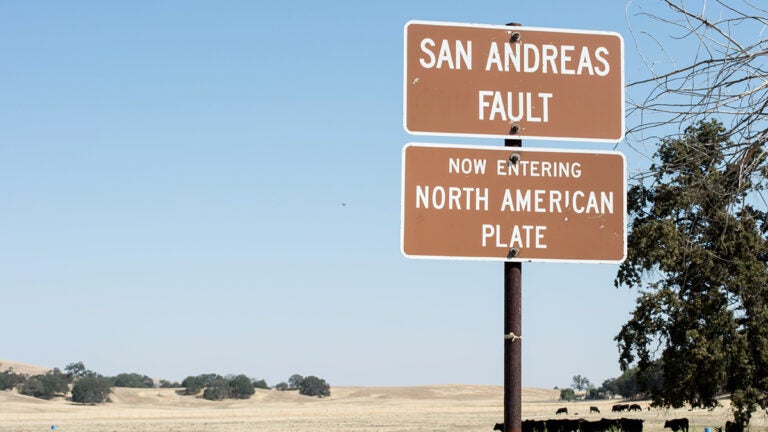
Superheated rocks deep underground help explain earthquake patterns
Rock-melting forces occurring much deeper in the Earth than previously understood appear to drive tremors along a notorious segment of California’s San Andreas Fault, according to new USC research that helps explain how quakes happen.
The study from the emergent field of earthquake physics looks at temblor mechanics from the bottom up, rather than from the top down, with a focus on underground rocks, friction and fluids.
On the segment of the San Andreas Fault near Parkfield, Calif., underground excitations — beyond the depths where quakes are typically monitored — lead to instability that ruptures in a quake.
“Most of California seismicity originates from the first 10 miles of the crust, but some tremors on the San Andreas Fault take place much deeper,” said Sylvain Barbot, assistant professor of Earth sciences at the USC Dornsife College of Letters, Arts and Sciences. “Why and how this happens is largely unknown. We show that a deep section of the San Andreas Fault breaks frequently and melts the host rocks, generating these anomalous seismic waves.”
The newly published study appears in Science Advances.
Trouble in the “go-along, get-along” phase
So what’s happening deep in the Earth to explain the rapid quake recurrence?
Using mathematical models and laboratory experiments, the scientists simulated the dynamics of fault activity in the deep Earth spanning 300 years to study a wide range of rupture sizes and behaviors.
The researchers observed that, after a big quake ends, the tectonic plates that meet at the fault boundary settle into a “go-along, get-along” phase. For a spell, they glide past each other, a slow slip that causes little disturbance to the surface.
But this harmony belies trouble brewing. Gradually, motion across chunks of granite and quartz, the Earth’s bedrock, generates heat due to friction. When friction pushes temperatures above 650 degrees Fahrenheit, the rock blocks grow less solid and more fluidlike. They start to slide more, generating more friction, more heat and more fluids until they slip past each other rapidly — triggering an earthquake.
“Just like rubbing our hands together in cold weather to heat them up, faults heat up when they slide,” Barbot said.
It’s a different way of looking at the San Andreas Fault. Scientists typically focus on movement in the top of Earth’s crust, anticipating that its motion, in turn, rejiggers the rocks deep below. For this study, the scientists looked at the problem from the bottom up.
“It’s difficult to make predictions,” Barbot added, “so instead of predicting just earthquakes, we’re trying to explain all of the different types of motion seen in the ground.”